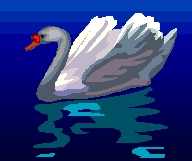4th Grade Biographies
Right now in the 4th grade students are working on their biographies You get to choose a famous person to research and write about . After the written work the 4th graders are doing a wax museum. The 4th graders will hold their thumbs up, and if you press it down they’ll give you information on their person’s life as if they themselves were the person.
The 4th graders have been learning cool facts about their famous people that they never knew about. For example, Grace is doing Beethoven, and she learned that he was deaf and that he played for Mozart. Claire is doing Jackie Robinson, and she learned that he played 4 different sports. Daniel is doing Albert Einstein and he learned that he is the best physicist ever. He was even smarter than Isaac Newton.
To prepare for the wax museum, the students must study their person’s life. They need to memorize facts so when people come around they know what to say. The 4th graders also need to plan out an outfit that their person would have worn during their time. Some people, like Anne Frank or George Bush, will be simple, but other people like King Tut or Albert Einstein, may be difficult. The students will have to use their imagination for the costumes.
The biographies will most likely be hung on bulletin boards, and we hope you read and enjoy them!
By: Jacob Bernstein and Daniel Zhou



